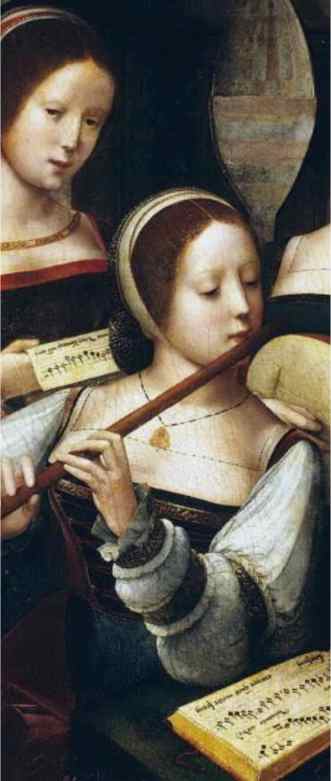Über
Inspired and largely based on the valuable editorial work of the Goldberg Stiftung "renaissance.resampled.de" presents works of early Renaissance music that have hardly or never been heard before. What is interesting about these works from a musical history point of view is that they are based on the foundation of a highly developed vocal polyphony, especially the sacred art music tradition. This is not apparent only be seen in the imposing Masses of an Antoine Brumel. The same artistic skill has left its mark on the polyphonic movements of the Codex "Bologna q18" and those of the "Leuven Chansonnier". But even in the movements collected in q18, with the musical composition becomming apparently less related to a sung text, new qualities of an increasingly instrumental art music come to light. Since a vocal performance on the one hand seems increasingly improbable, but on the other hand no information is available about which instruments to choose for the performance, these sources pose the challenge of reconstructing the possible forms of the performance using other sources. In this context, the representation of musical performances, musicians and instruments in the visual arts of the time plays an essential role. They give credible indications as to which instruments were available and in which combinations.
At the same time, however, it cannot be ruled out that the lack of commitment to a specific set of instruments also makes an openness for different settings possible. For example, some early music ensembles have performed Pieces of renaissance music like this with plausible results as a series of repetitions that varied in the line-up.
It seems reasonable to assume that the transition from vocal to instrumental art music first might have tried to imitate the homogeneity of a vocal ensemble through the similarity of instruments from the same instrument family. In addition to the well-known gamba consorts, there were also comparable families of instruments for flutes, Crumhorn, and brass players. However, many paintings also show mixed ensembles, as they were called "broken consort". On the other hand, for pragmatic reasons, it must often be expected that instead of an entire vocal ensemble, only one or a few solo singers were accompanied by individual or several instruments, which either took over the accompanying voices as melody instruments or combined the voices that were not sung as accompanying instruments. Since "renaissance.resampled" classifies each of the above-mentioned forms of performance as at least conceivable, an attempt is made here to implement every musical movement handed down from the sources with a series of different scoring to indicate the scope that the performers could have had with this music. Also in order not to let the misunderstanding of a single "true" historical interpretation arise, but to illuminate the spectrum in which the realization of this music may have moved at the time of its creation.
